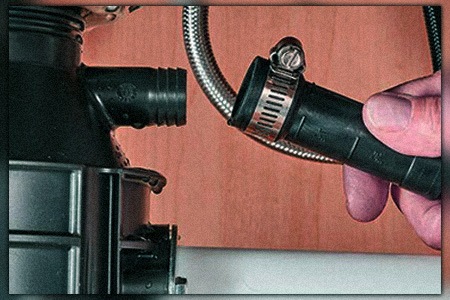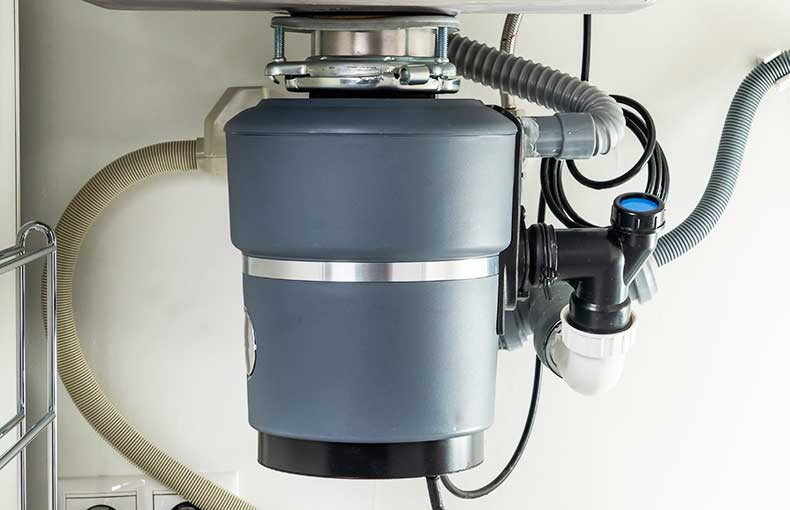On this page below you can get lots of really good information related to Why Is My Garbage Disposal Leaking From the Bottom?.

Garbage disposals are crucial kitchen area appliances that assist in dealing with food waste successfully. However, a leaking waste disposal unit can be an aggravating and unpleasant issue to take care of. The good news is, numerous leaks can be fixed easily with a few simple steps. In this article, we will review exactly how to fix a dripping garbage disposal properly.
Introduction
Waste disposal unit are mounted under kitchen area sinks and are made to shred food waste right into smaller sized pieces, permitting it to travel through the pipes system conveniently. While these devices are typically reliable, leaks can occur over time because of damage, loose connections, or damages to the device.
Common Causes of Leaks in Garbage Disposals
Worn Seals and Gaskets
Seals and gaskets play an important role in preventing water from dripping out of the garbage disposal. With time, these parts can weaken, leading to leakages around the disposal device.
Loose Links
The connections between the garbage disposal and the pipes system can come to be loosened over time, triggering water to leak out during operation.
Fractures or Openings in the Disposal Unit
Physical damages to the waste disposal unit, such as splits or openings in the housing, can also cause leakages.
Recognizing the Resource of the Leak
Before attempting to repair a leaking garbage disposal, it is necessary to recognize the source of the leakage. This can typically be done with aesthetic inspection or by conducting simple examinations.
Visual Assessment
Examine the garbage disposal system thoroughly for any indications of water leak. Pay very close attention to locations around seals, gaskets, and link factors.
Testing for Leaks
One method to check for leaks is by running water with the disposal unit and checking for any type of noticeable signs of leakage.
Devices and Products Needed for Repairing a Leaking Garbage Disposal
Before starting the repair work process, collect the essential devices and materials, consisting of a screwdriver, flexible wrench, plumber's putty, substitute seals or gaskets, and epoxy or patching material for fixing fractures or holes.
Step-by-Step Guide to Repairing a Dripping Garbage Disposal
Switch off the Power
Before trying any repairs, make certain that the power to the garbage disposal device is turned off to avoid the threat of electric shock.
Locate the Leak
Recognize the specific location of the leak and identify the cause.
Tighten Links
Use a wrench to tighten up any kind of loosened connections in between the disposal system and the pipes system.
Replace Seals or Gaskets
If the leak results from worn seals or gaskets, eliminate the old components and replace them with brand-new ones.
Patching Fractures or Holes
For cracks or openings in the disposal system, usage epoxy or an ideal patching material to secure the damaged location.
Checking the Garbage Disposal After Repair
Once the fixing is complete, test the waste disposal unit by running water through it to make sure that the leak has been fixed.
Preventive Upkeep Tips to Avoid Future Leaks
To avoid future leaks, it is vital to do regular upkeep on your garbage disposal. This includes maintaining it tidy, avoiding placing non-food things or tough get more info things down the disposal, and periodically checking for leakages or other issues.
Conclusion
To conclude, taking care of a leaking waste disposal unit is a reasonably uncomplicated process that can be finished with fundamental devices and products. By following the actions detailed in this short article and exercising precautionary upkeep, you can maintain your garbage disposal in good working condition and stay clear of costly repairs in the future.
What to Do About a Leaking Garbage Disposal
A leaking garbage disposal often goes unnoticed until you confront a sopping cabinet, a foul-smelling puddle, or an audible drip-drip-drip from the unit. The fix can be frustrating, too, because the leak can stem from a number of components in the system. Fortunately, with a little sleuthing, you can zero in on the leak and—depending on the exact location—stop the icky oozing and repair the component that caused it. Worst case scenario, if it turns out that the garbage disposal must be replaced, installing a new one is a reasonable do-it-yourself task for those with basic plumbing skills. Read on to keep the cash you’d otherwise hand over to a pro.
Prepare to find the leak
Prior to testing the garbage disposal for leaks, unplug it at the wall outlet and turn off the power from the breaker box to prevent electrical shock. Then insert a watertight sink stopper into your sink drain and wipe the unit dry with a clean cloth. In any handy container, mix a few drops of food coloring into a few cups of water, and pour the dyed water onto the sink stopper to help you locate the leak.
Investigate the source
the top, where the disposal meets the sink drain the side, where the dishwasher hose or main drain pipe connects to the disposal or the bottom of the unit Inspect each of these locations while gliding a light-colored rag over the unit; the dyed water will readily show on the rag and reveal the location of the leak. If a leak isn’t immediately apparent, remove the sink stopper and pour a few more cups of dyed water down the sink drain, then check for leaks again. Leaks near the top of the unit are more likely to show themselves while the sink is plugged, while side and bottom leaks are more noticeable while the sink is unplugged.
The metal sink flange that sits directly inside the sink drain is typically sealed around the top with plumber’s putty (a clay-like sealant) and then secured from under the sink with bolts. If the plumber’s putty deteriorates, or the bolts loosen, the flange can no longer form a watertight seal between the sink drain and the disposal—which could cause a leak at the top of the unit.
To reseal the leaky flange, you must first detach the garbage disposal. Start by loosening the screws securing the main drain pipe to the disposal, then loosen the screws in the metal clamp securing the dishwasher hose to the disposal and detach the drain pipe and dishwasher hose from the disposal. Loosen the screws in the mounting ring that connects the disposal to the metal mounting assembly beneath the sink, then pull down the disposal and carefully set it on a clean, dry surface. Loosen the bolts in the mounting assembly with a wrench, then pull down the mounting assembly and set it near the disposal.

We had been shown that report on The Handy Guide To Fixing Your Garbage Disposal Leaking from a good friend on a different web address. Appreciated our blog posting? Please share it. Help another person check it out. I praise you for your time. Please check up our blog back soon.
Estimate Free